Before discussing Fiji, let’s talk about March 14th’s total lunar eclipse.
We were prepared. We consulted both the sky charts and our daughter back home, and we had the sunset time, moonrise time, and times of the various stages of the eclipse.
We postponed our dinner plans, made sure the camera batteries and phone were adequately charged, and then we waited! Sunset was on time, as promised. But the moon? Did she make her appearance on time, partly eclipsed? Yes, she did, but clouds hugging the eastern horizon occluded our view. By the time the moon was high enough to see, it was in full eclipse. Although we took photographs, we quickly discovered that the required slow shutter speeds and the up-and-down movement of the ship were not a happy combination. Eventually, we put down our cameras and simply watched the sky show from our balcony. With the dark skies before us, a glass of champagne for me, and a Tuala Lager for Bob, we had a different evening than we’d planned, but still delightful and memorable.
Eventually, we went to the Pool Grill for BBQ ribs and took a final photo of the wee moon rising above the ship.
Fiji! This destination has always evoked a sense of exotic lands and peoples. We’ve known about Fiji since we studied geography in grade school, so we were excited to see the country and meet its people.
Fiji is our last of twelve island stops. We visited our first island, Robinson Crusoe, in mid-February and have been island-hopping across the South Pacific since then. Once we leave Fiji, we sail for New Zealand and then Australia.
Sherpa and I took a four-hour, Regent-included tour called SOUTH SEA ORCHIDS AND FIJIAN ARTIFACTS. Somewhat different than the original tour we’d signed up for, we had three planned stops:
Travel by coach to South Seas Orchid, briefly tour the orchid gardens, view the historic Fijian artifact collection at Burness House, and have morning tea.
Depart for Sabeto Village for a Kava ceremony and entertainment. Village tour.
Return to the pier, with optional drop-off at Lautoka Mall for shopping.
First things first. In Fiji, everyone greets everyone with an emphatic cheer: “Bula!” Both hello and goodbye, during our four-hour introduction to Fiji, hundreds of “bulas” were exchanged! Even the tiniest children approached us and said, “Bula.”
According to our tour guide, Joe, Fiji’s archipelago has 333 islands. Some are inhabited, and some are mere specks of land. Formed by volcanic action and coral reefs, the interior mountains are rugged, forested, and nearly impassable. We were docked in Laukota on Fiji’s largest island, and Joe, our tour guide, explained that if he wanted to drive around the island’s circumference, it would take him one day. But it would take him two days if he tried to drive across the island via the mountain roads.
As we drove through the industrial port, Joe pointed out the sugar factory, an essential part of Fiji’s history. He also showed us the sugar cane fields along both sides of the road. Indentured workers from India built the sugar mill from 1899 to 1903 for the Colonial Sugar Refinery, and sugar became Fiji’s primary economic export. The factory still employs 1300 Fijans, the largest employer in the country.
After a 40-minute drive, we arrived at Seven Seas Orchid and were invited into Ailene Burgess’s home. Her grandson, Steven, introduced us to the house and explained many of the Fijian artifacts that had been given to the family or brought to Fiji from their European homeland by his ancestors.
Almost everything we saw was part of the Burgess family heritage. From place settings of china and silver to collections of Lladro, Royal Doulton, and Wedgwood, to a sitting area created for family friend and famous actor Raymond Burr, each had a story. The antique organ was ordered from Chicago, Illinois, about 150 years ago and was played by Steven’s great-great-great-grandmother. He gave us a brief demonstration of the foot-pumping organ’s sound, still with all the original parts, and it sounds great!
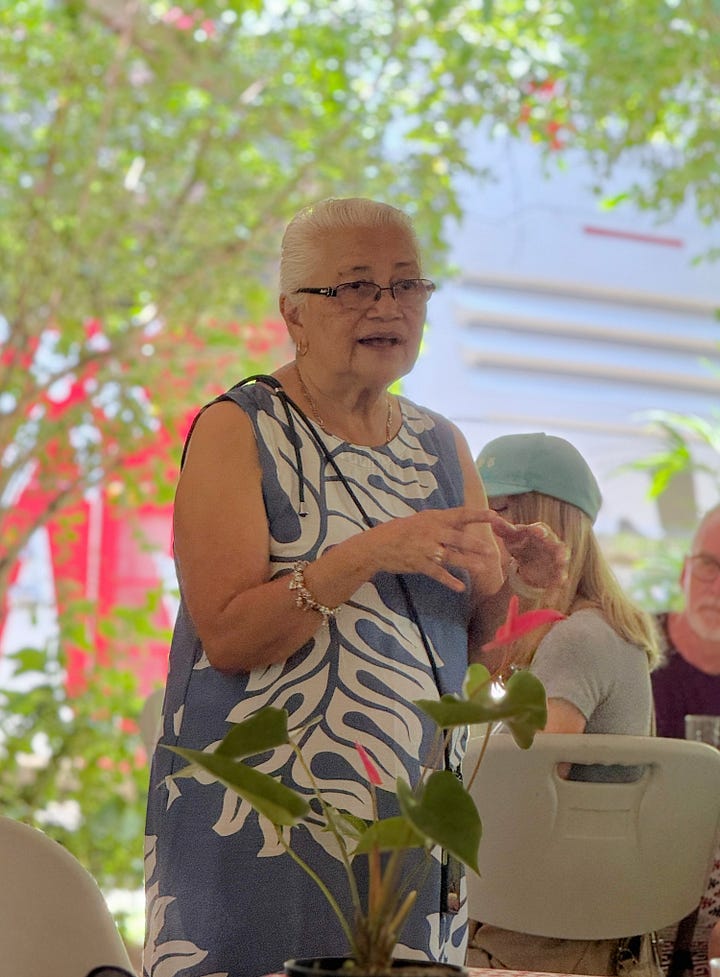

Aileen Burgess and her husband, Don, transformed a 12-acre cane farm into a picturesque orchid and anthurium nursery. Their grandson, Steven, is now an integral part of the team.
Not only do they grow flowers, but they also run an entrepreneurial business teaching young women how to cultivate orchids. They provide housing and instruction for the women, who benefit from learning a trade and having an income to support their families.
After our home visit, morning tea was served. Mrs. Burgess (Nana) provided homemade egg and tuna sandwiches, small finger pancakes, and delicious banana bread. Coffee, tea, and orange juice rounded out the lovely food break. Nana explained how their orchid farm evolved, detailing their day-to-day practices while we enjoyed our food.
Finally, we toured the orchid garden, a shade-protected enclosure where workers care for hundreds of orchids. After our stroll through the orchids and an adjoining garden, it was time to board our bus and head to Sabeto Village for a Kava ceremony and entertainment. I’ll share the second part of our day in my next post.
Until then, “Bula!”





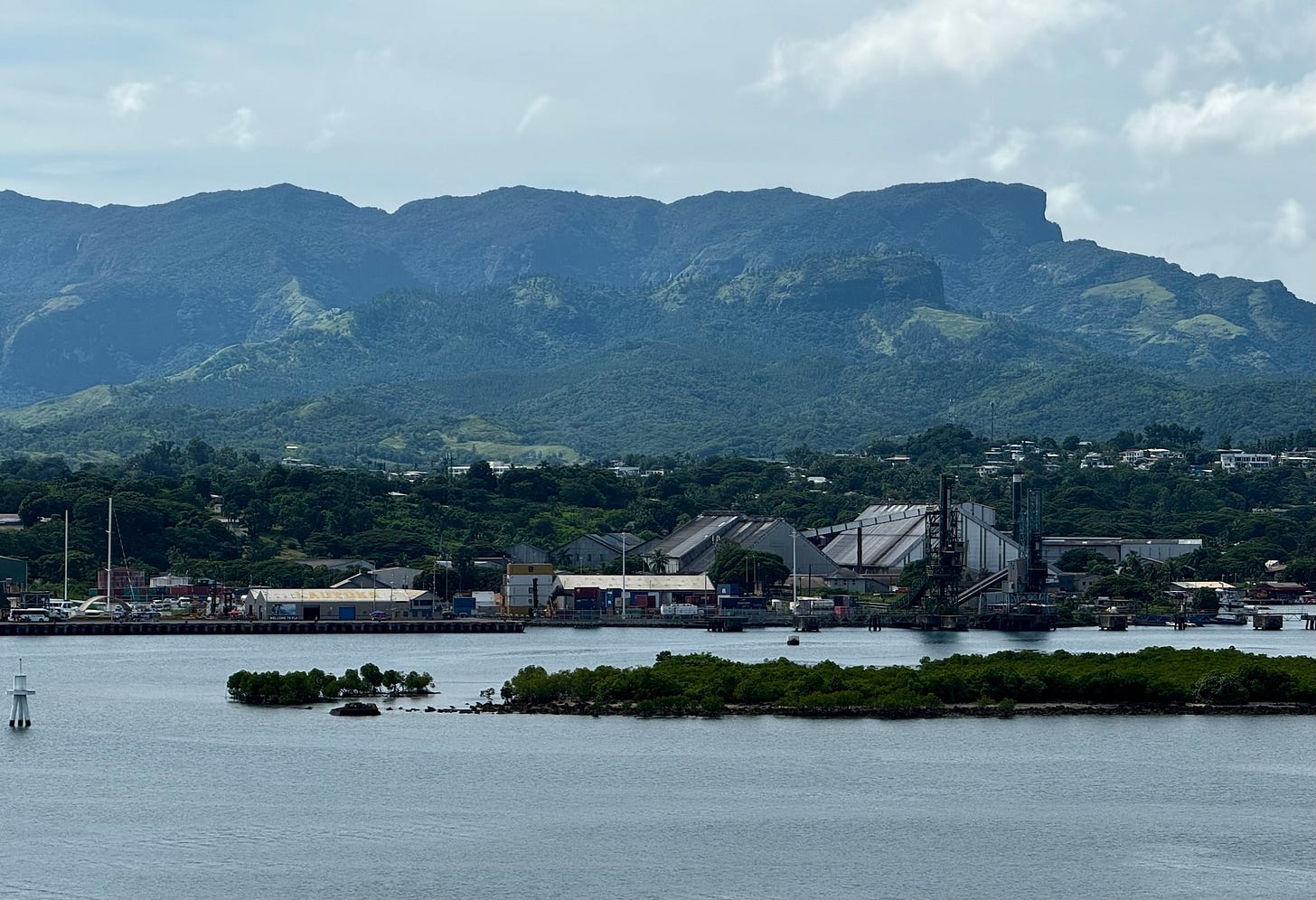
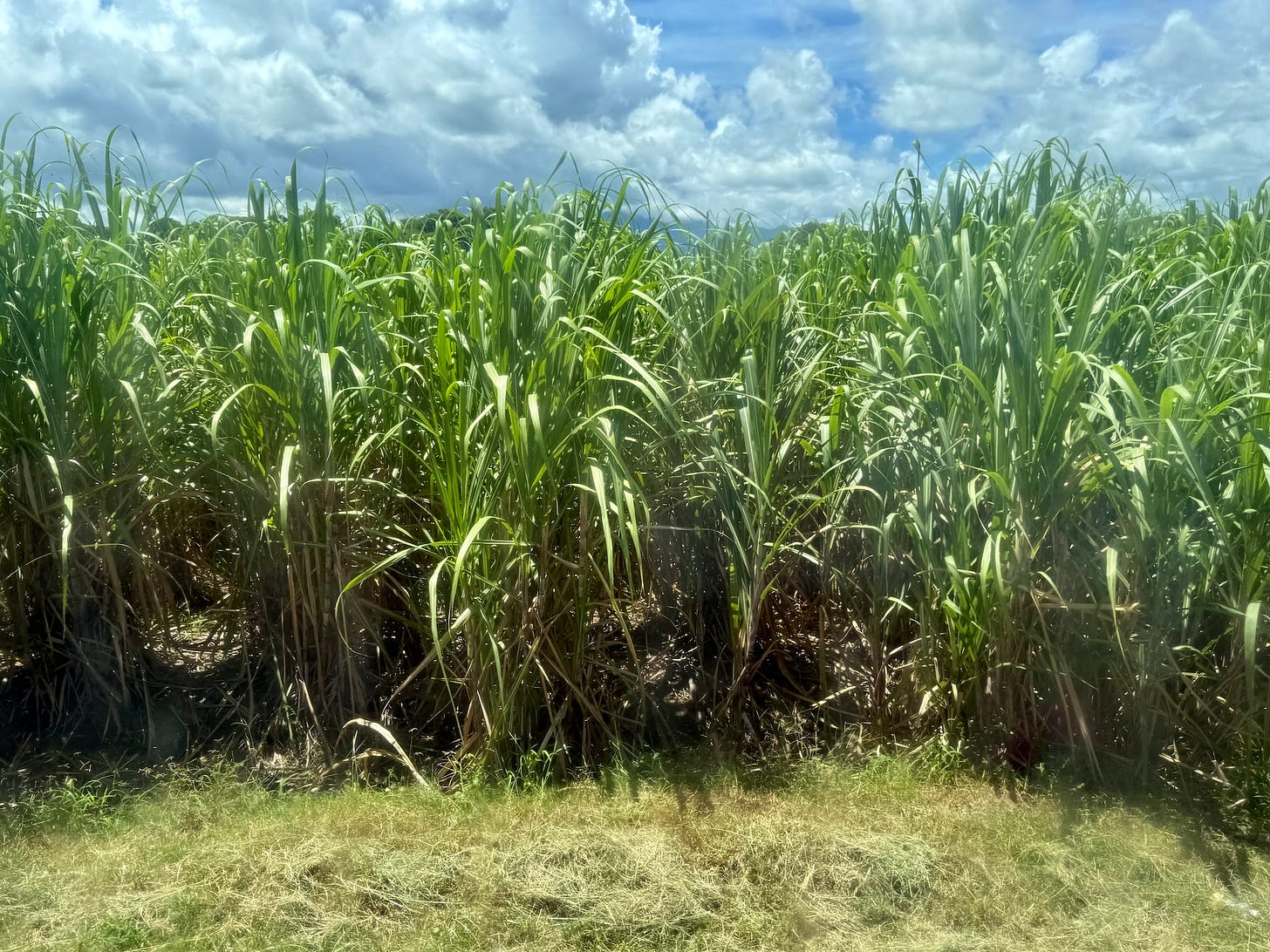
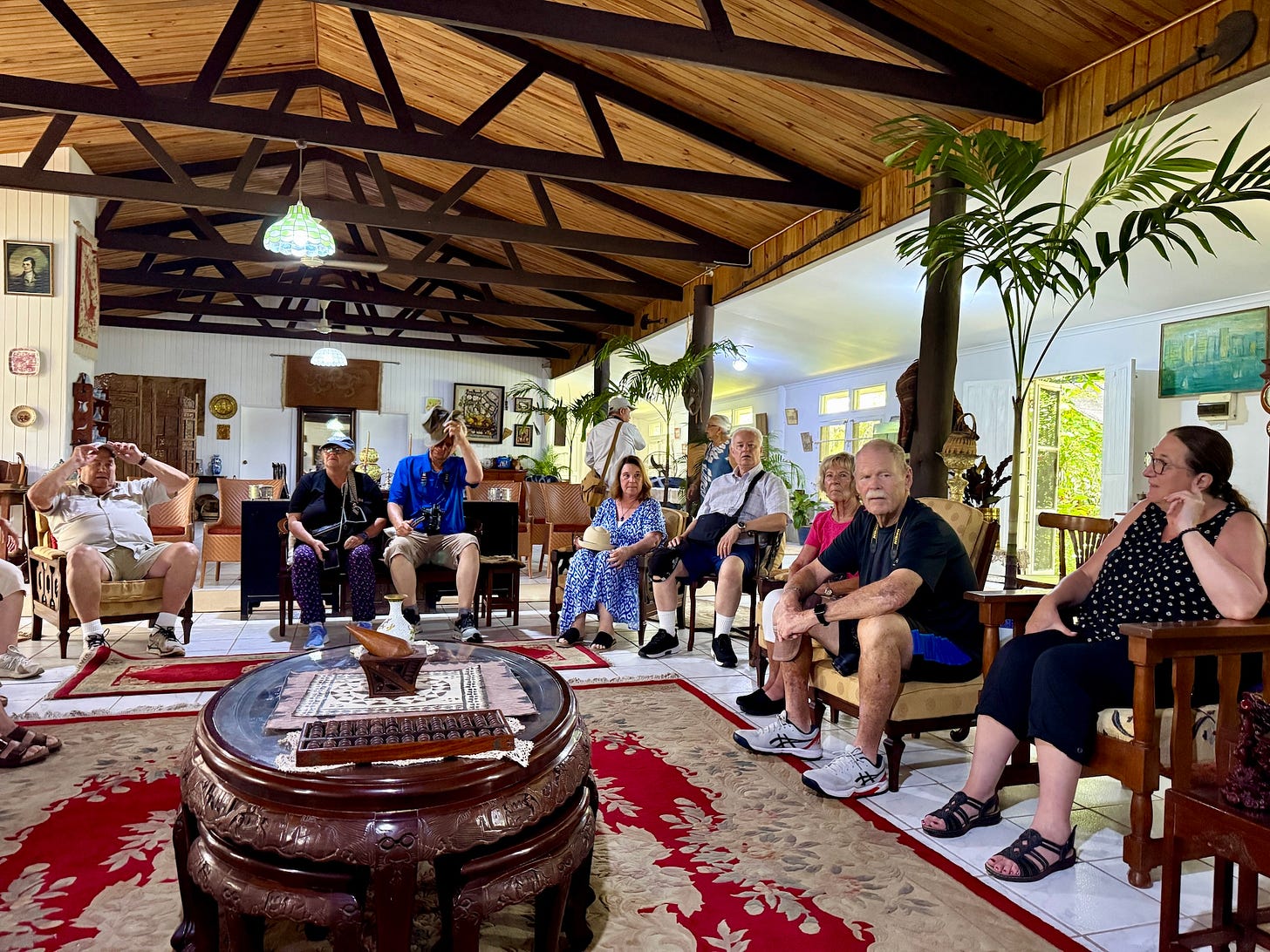
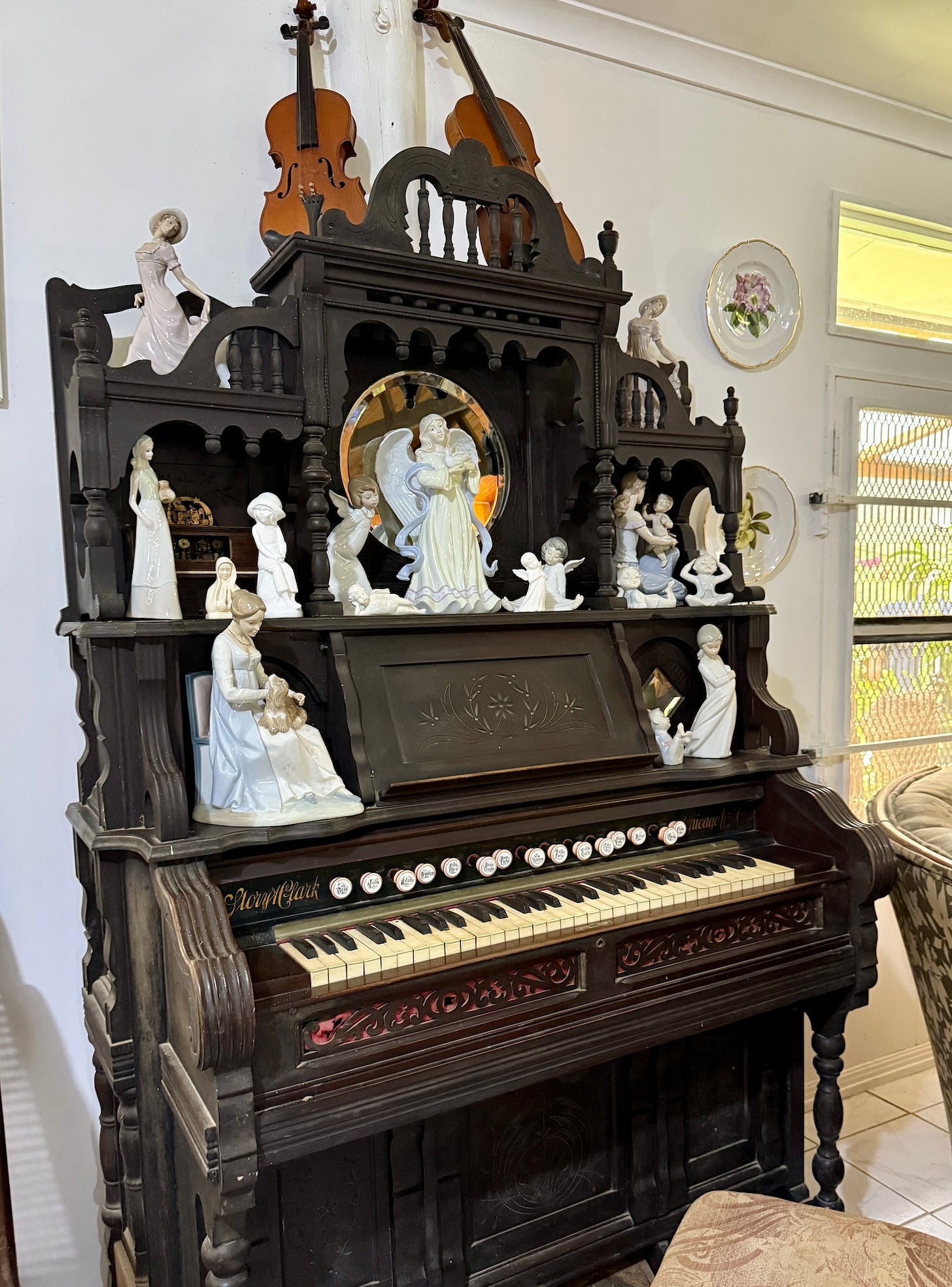
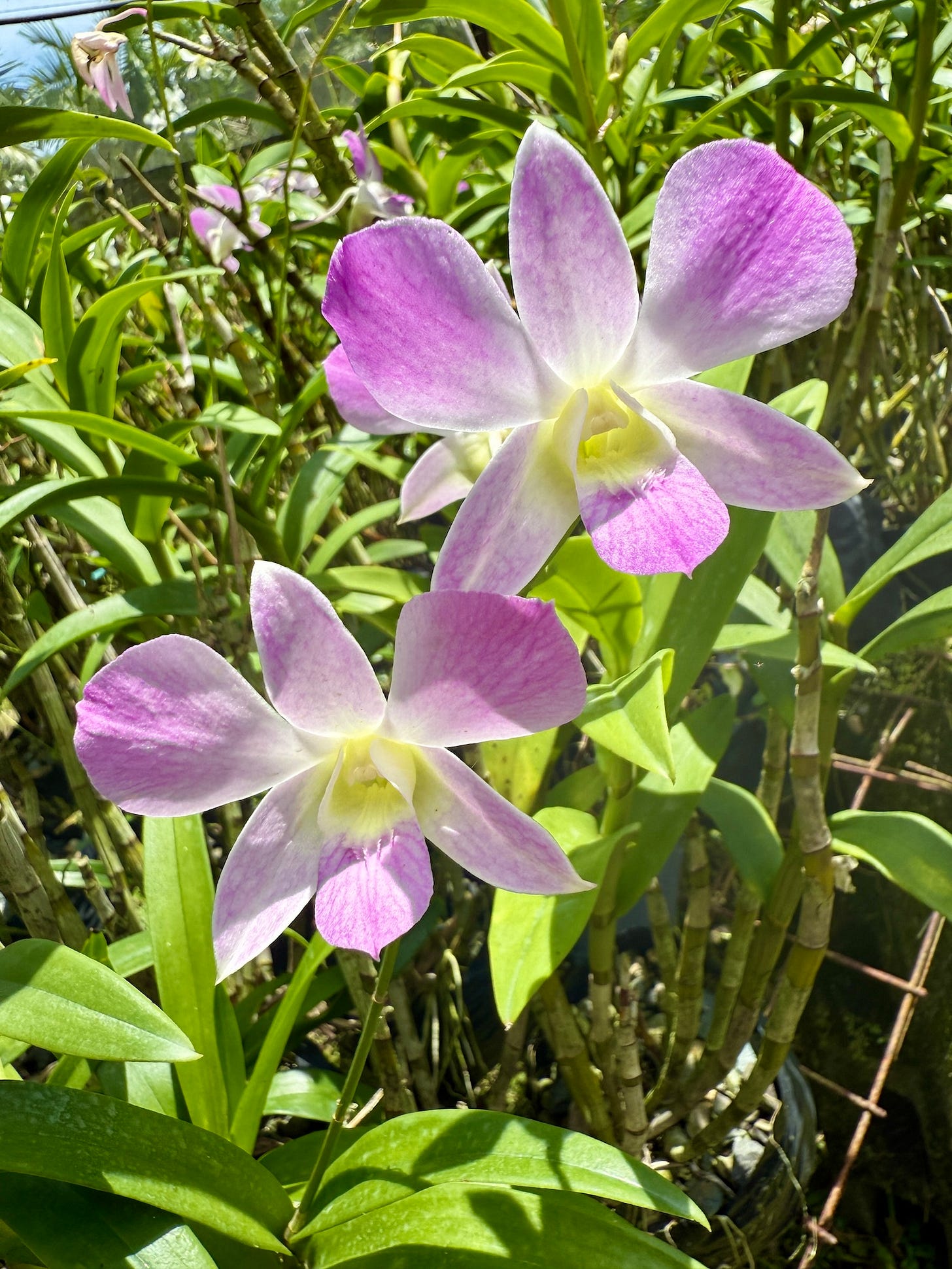
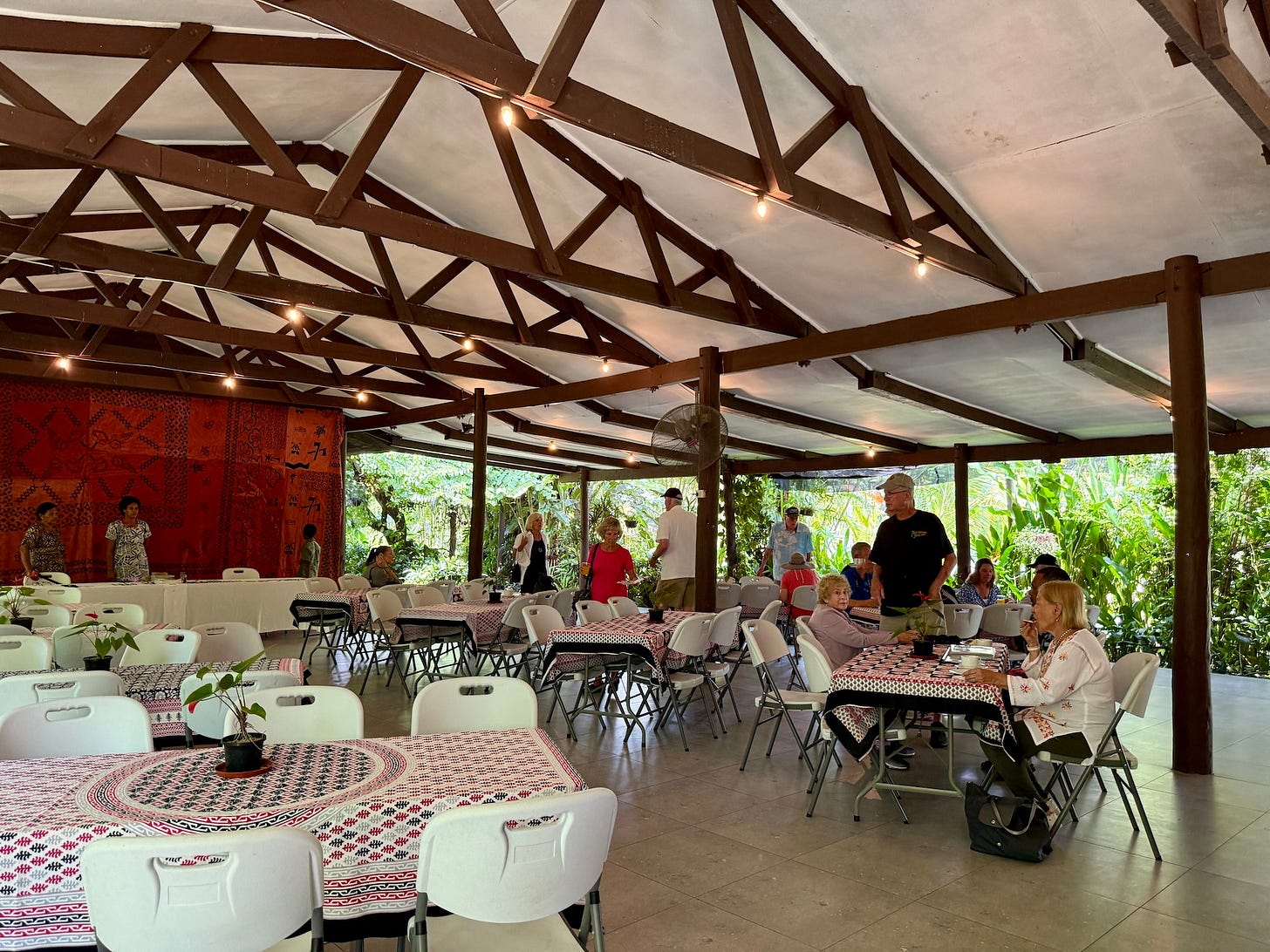
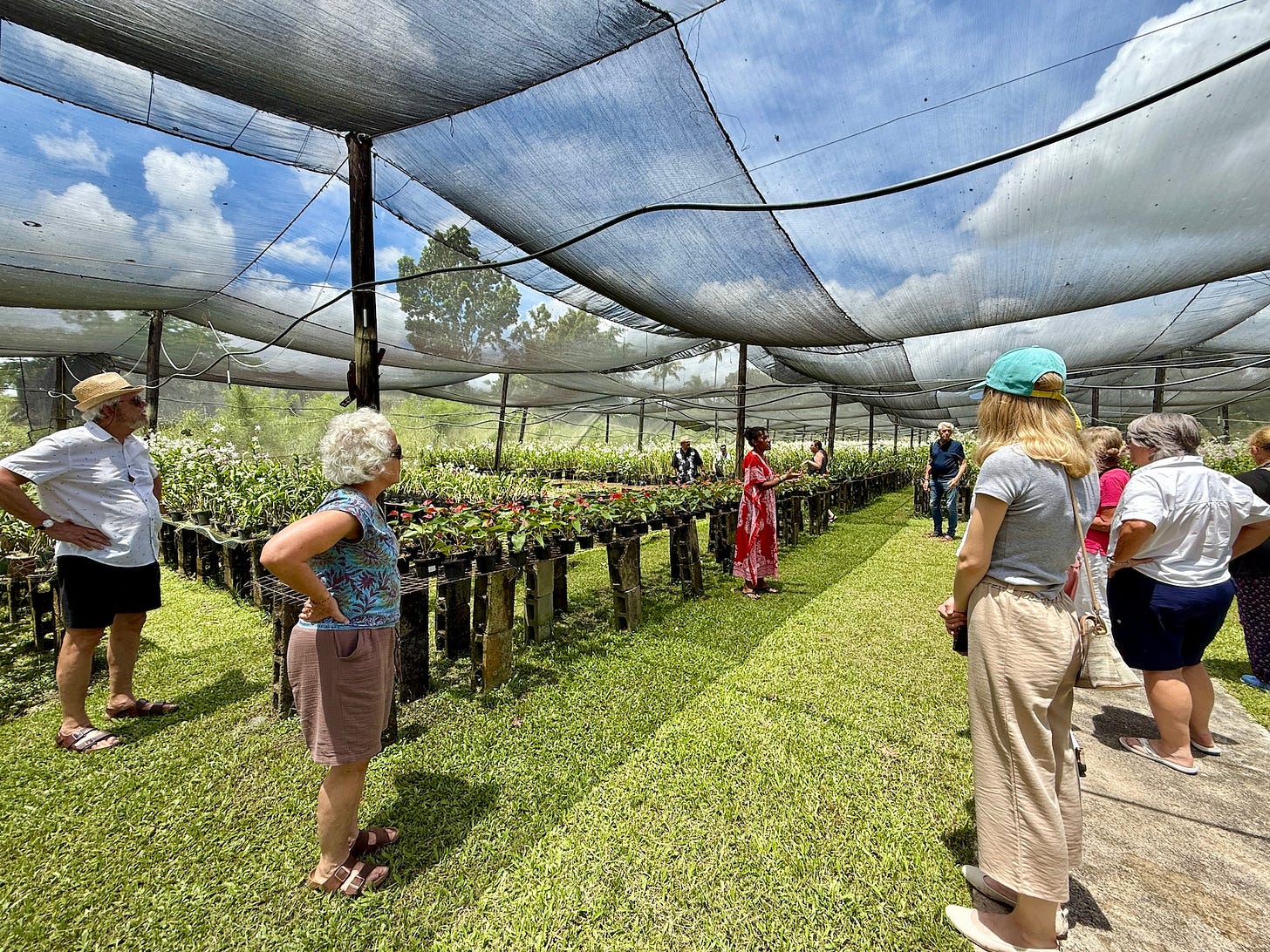
Such a fun start to your time in Fiji!